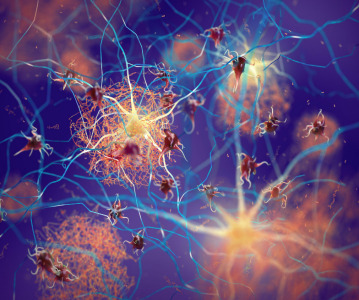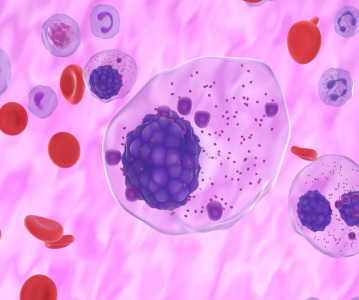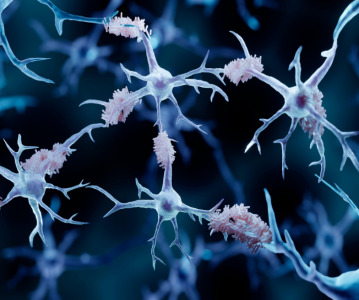Versatile Proteins could be New Target for Alzheimer’s Drugs

A class of proteins that controls visual system development in the young brain also appears to affect vulnerability to Alzheimer’s disease in the ageing brain. The proteins, which are found in humans and mice, join a limited roster of molecules that scientists are studying in hopes of finding an effective drug to slow the disease process.
“People are just beginning to look at what these proteins do in the brain. Although more research is needed, these proteins may be a brand new target for Alzheimer’s drugs,” said Carla Shatz, PhD, the study’s lead investigator. Dr Shatz is a professor of biology and neurobiology at Stanford University in California, and the director of Stanford's interdisciplinary biosciences program, BioX.
She and her colleagues report that LilrB2 (pronounced “leer-bee-2”) in humans and PirB (“peer-bee”) in mice can physically partner with beta-amyloid, a protein fragment that accumulates in the brain during Alzheimer’s disease. This in turn triggers a harmful chain reaction in brain cells. In a mouse model of Alzheimer’s, depleting PirB in the brain prevented the chain reaction and reduced memory loss.
The research was funded in part by the National Eye Institute, the National Institute on Aging (NIA), and the National Institute of Neurological Disorders and Stroke (NINDS), all part of the National Institutes of Health. It is reported in the 20 September issue of Science.
“These findings provide valuable insight into Alzheimer’s, a complex disorder involving the abnormal build-up of proteins, inflammation and a host of other cellular changes,” said Neil Buckholtz, PhD, director of the neuroscience division at NIA. “Our understanding of the various proteins involved, and how these proteins interact with each other, may one day result in effective interventions that delay, treat or even prevent this dreaded disease.”
Related News
-
News BioNTech to begin mRNA vaccine manufacturing in Rwanda by 2025
German biotechnology company BioNTech has stated their intentions to begin production at their mRNA vaccine factory in Rwanda by 2025, which will mark the first foreign mRNA vaccine manufacturing site on the continent of Africa. -
News Identifying Alzheimer’s Disease biomarker proteins with whole blood tests
A University of Manchester spin-out pharmaceutical company, PharmaKure, has reported successful study results for the quantification of Alzheimer’s Disease biomarker proteins with a whole blood test. -
News Bill & Melinda Gates Foundation to boost mRNA vaccine initiatives in Africa with USD $40m
To address vaccine inequality and accessibility issues, the Bill & Melinda Gates Foundation aims to deliver USD $40m to various biotech companies and vaccine manufacturers in support of mRNA vaccine development. -
News CPHI Podcast Series: Exploring neurological frontiers in Alzheimer's and beyond
The next episode of the CPHI Podcast Series delves into the science and background behind some recent developments in the field of Alzheimer's disease and neurological disorders. -
News Is patient centricity the future of pharmaceutical manufacturing?
In this interview with Sandra Sánchez y Oldenhage, President of PharmAdvice, she speaks to the importance of considering patients in the manufacturing stages of the pharmaceutical supply chain, and how it can redefine healthcare. -
News CPHI Podcast Series: How to leverage AI for Drug Discovery
Artificial intelligence is the topic of debate in the latest episode from the CPHI Podcast Series, where Digital Editor Lucy Chard speaks with Bill Whitford of DPS Group about the integration of AI in healthcare. -
News Pfizer forges ahead with blood cancer therapy after approval from FDA
Pfizer gains accelerated approval from the US FDA for their new bispecific antibody therapy for multiple myeloma, set to address an unmet need for patients. -
News Alzheimer's drug donanemab deemed effective in landmark clinical trial
Results from the TRAILBLAZER-ALZ 2 Randomised Clinical Trial into the use of donanemab to treat early symptoms of Alzheimer’s disease have been analysed.
Position your company at the heart of the global Pharma industry with a CPHI Online membership
-
Your products and solutions visible to thousands of visitors within the largest Pharma marketplace
-
Generate high-quality, engaged leads for your business, all year round
-
Promote your business as the industry’s thought-leader by hosting your reports, brochures and videos within your profile
-
Your company’s profile boosted at all participating CPHI events
-
An easy-to-use platform with a detailed dashboard showing your leads and performance







